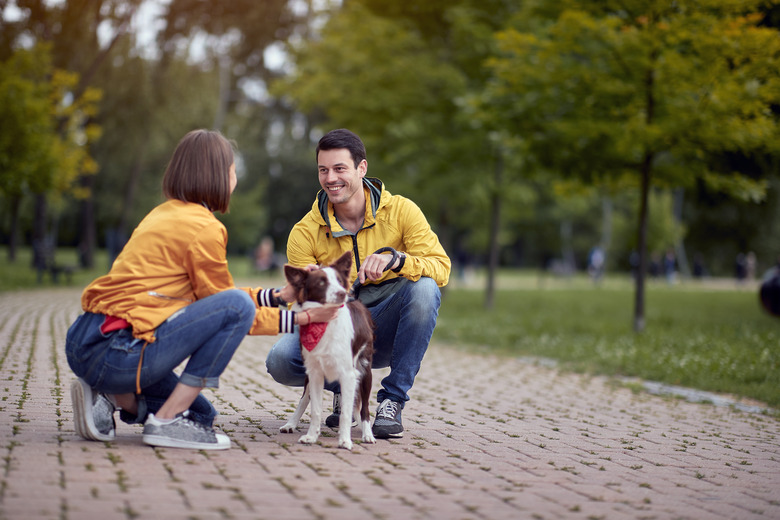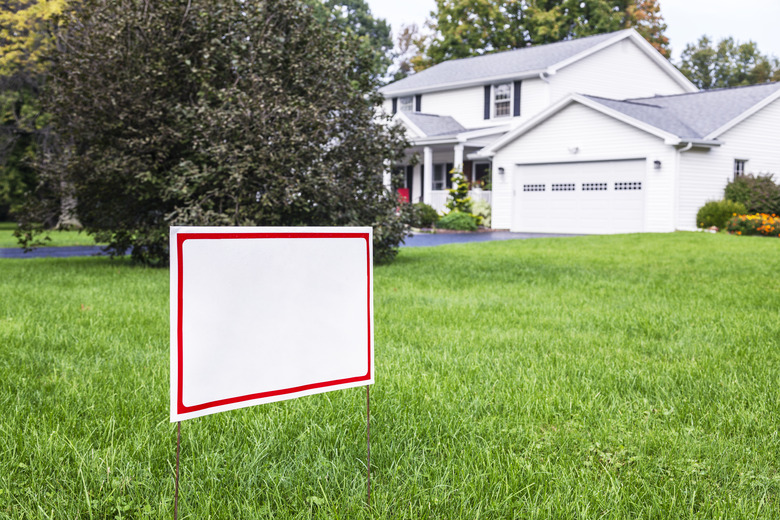How To Talk To Your Neighbors About Fireworks, 4th Of July, And Your Dog
We may receive a commission on purchases made from links.
If your dog hates fireworks, you aren't alone! While some dogs are calm with the festivities, the 4th of July is a hard holiday for most dogs. Dog parents want to do anything they can to comfort their dogs and make home a safe place — even if fireworks displays are happening outside.
In addition to working to desensitize your dog to fireworks, you may also want to consider gently lobbying your neighbors to stop doing their own fireworks shows. It's natural to feel nervous about talking with your neighbors about your dog's fears around the holiday, but putting up signs in your yard expressing that fireworks harm your pets can be an excellent way to start conversations.
Talking with your neighbors about how fireworks harm your dog
Talking with your neighbors about how fireworks harm your dog
The 4th of July is stressful for dogs (and other pets), and so it's stressful for dog parents as well. Instead of getting angry at neighbors for lighting off fireworks, it can be helpful to try to be proactive with conversations. Advocating for your dog can look like explaining to your neighbors that your dog has anxiety, and asking neighbors to refrain from lighting fireworks near your home. These conversations won't always work, but if you have good relationships with your neighbors, it can't hurt to try.
Compassionate people are less likely to do something if they know it is directly causing harm to someone else. You might be surprised at the way you can change your neighbor's actions by calmly explaining in advance how fireworks make your dog feel. Neighbors you know well or who you and your dog see regularly while out walking may be most willing to change their plans to make your dog more comfortable.
These conversations may even lead to you learning that you have neighbors whose pets are also afraid of fireworks. These neighbors may also be willing to talk with other people in your neighborhood.
Educational yard signs about fireworks and dogs
Educational yard signs about fireworks and dogs
One small way to communicate your dog's fears about fireworks to your neighborhood is to put signs in your front yard. These signs can clearly state that you have an anxious dog or anxious cat in the house and ask nicely that neighbors refrain from setting off fireworks. You can start putting your signs out in the weeks leading up to Independence Day to start conversations early. You can buy them or make them.
There are communities that have started distributing these sorts of signs to veterans who experience symptoms of PTSD with the sounds of fireworks. Even some humane societies have begun distributing signs explaining how fireworks are upsetting to pets. Yard signs can be an effective way to try to communicate your dog's needs ahead of July 4th and start conversations in your neighborhood and in your community about the harm that fireworks cause to pets. Check with your local humane society to see if they are distributing or selling 4th of July signs. If they aren't, you can also purchase signs online or make your own.
DIY anxious dog yard signs
DIY anxious dog yard signs
It's possible to make your own "no fireworks" or "anxious dog" yard signs to post in your front yard. To make these, type out a message on your computer. Simple language works best, like: "No fireworks please. Sensitive pets live here." The goal is to get the point across quickly, so people can read and comprehend while they walk or drive past your house.
You can also include a picture of your dog, or clipart of pets. Then, print out signs on brightly colored paper so they will be eye-catching. To make the yard signs sturdier in case it rains, you can put the printed pages into plastic sheet protectors. Then attach them to yard stakes or kitchen skewers and put them out in your front yard. After July 4th, pack them away and you can reuse them year after year.
Creating change related to fireworks displays
Do you ever wish fireworks displays could be a thing of the past? Some day they might be! Some places in Europe have begun using quiet fireworks for a public fireworks show to help reduce the distress caused to people and animals by the sound of traditional fireworks. Unfortunately, this trend hasn't gotten a lot of traction yet here in the United States.
You can't force your neighbors to stop setting off fireworks, but creating change in your local community sometimes starts with communicating your dog's experiences with fireworks and starting conversations with people. Even if your neighbors don't stop setting off fireworks completely, it's possible your signs and the conversations they start might encourage your neighbors to be a little more thoughtful.
Protect your anxious dog from loud noises
Protect your anxious dog from loud noises
Conversations with neighbors and yard signs to encourage your neighbors to avoid fireworks should only be part of your plans for supporting your anxious dog on the 4th of July. Training in advance of the holiday for desensitization of pets to the loud noises associated with fireworks is important. A local trainer who utilizes positive reinforcement methods can help you create a training plan. In addition, keeping your dog inside and making sure they are wearing a collar with updated tags is important.
If you know your dog struggles with panic or anxiety around fireworks, plan to do all the things you know to help keep your dog calm and safe including the use of over-the-counter supports like anti-anxiety vests, enrichment, and supervision on July 4th to keep your dog comfortable and safe. You may also want to talk with your veterinarian about whether your dog is a candidate for prescription anxiety medication.
In summary
In summary
One way to proactively advocate for your dog leading up to the 4th of July holiday is to purchase or make signs for your yard. These signs can respectfully ask your neighbors to refrain from lighting off fireworks, or at least ask them to avoid fireworks directly in front of your house. The signs can also provide some education to people passing by your home that your dog is uncomfortable with fireworks. While you can't force your neighbors to stop lighting off fireworks, you can appeal to their compassion and request that they do not do something knowingly harmful to one of their canine neighbors.


